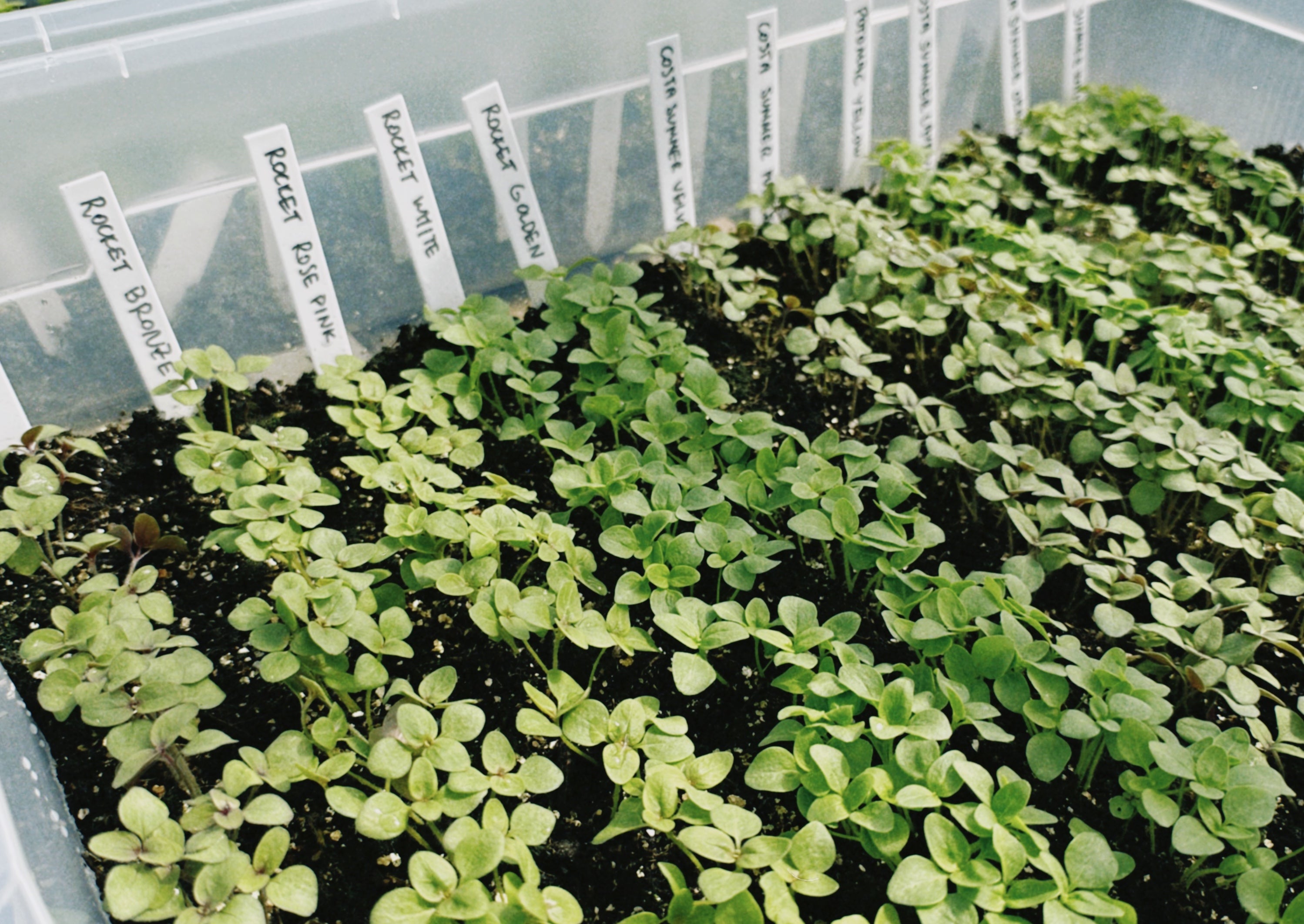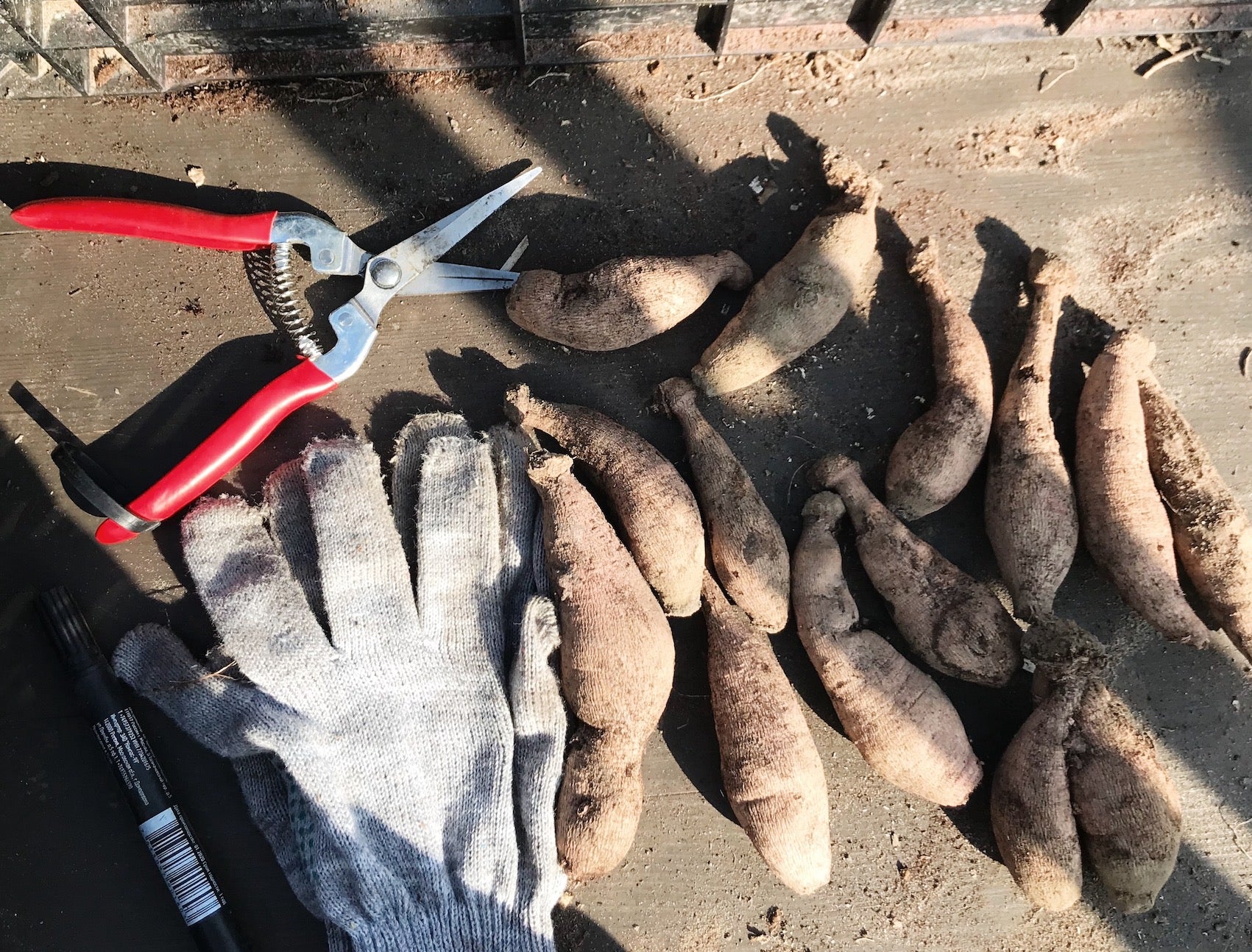We have been seeing a lot of questions about one of the most common diseases of dahlias – bacterial-induced crown and leafy gall. The disease is considered incurable. But is this really so? And what type of gall is the most common? And how to prevent it?
In this article we will refer to the existing publications of Melodie L. Putnam from Oregon State University who is widely known to focus on this disease and lectures of the Plant Pathology and Entomology course of Wageningen University and Research, Netherlands.
One of most studied plant diseases which has also given a start to genetic modifications in plants is “crown gall”. The causative agent of this disease is bacterium Agrobacterium tumefaciens. This disease is common in fruit and berry crops and is characterized by the formation of dense, uniform thickenings of the root system.

Photo 1. Root cancer or crown gall of woody perennials.
The crown gall disease also occurs in perennial and annual herbaceous plants. In case of dahlias, small tumors are initially formed in the eye area, from the beginning these tumors are not different in color from the healthy parts, but over time the tumors increase in size and become brown. By the end of vegetative period these tumors may rot and fall off. Affected plants may have a stunted growth appearance but may also look completely healthy. Infection of plants with crown gall (A. tumefaciens) causes tissue to transform into tumors or galls attached to stems or roots, but these galls do not differentiate into buds or stems.
Photo 2. Crown gall of dahlias.


The mechanism of crown gall disease infection is described as introduction of the pathogen’s bacteria A.tumefaciens T-plasmid into the cells of the upper tissue layers, so that the cells divide unlimitedly, since the introduced plasmid encodes the production of the root hormone auxin, and produce individual amino acids (opines), which are used by bacterium.
There is a biological control product for prevention of crown gall called NoGall which works well in woody perennials. When woody cuttings are dipped into this before planting, the biocontrol bacteria present in the formulation prevent tumor formation by preemptively colonizing the cutting, and by producing an antibiotic that is toxic to A. tumefaciens. M. Putnam’s reserch group tested if NoGall and BlightBan, another biocontrol product, would work to prevent crown gall in herbaceous perennials but neither product was effective in reducing the incidence of crown gall tumors in herbaceous plants. It was found that strains of A.tumefaciens recovered from herbaceous plants are different than those recovered from woody plants. This may explain why the NoGall was less effective in herbaceous perennials than it was in woody plants.
At the same time, not only gardeners, but also professional growers in the EU and USA still do not distinguish crown gall from leafy gall. Leafy gall is caused by another pathogen, the bacterium Rhodococcus fascians, which currently causes one of the most serious damages to the flower industry, since, indeed, no effective means of protection has been invented against it but also because the disease can also appear 2-3 years after taking cuttings or cell tissue from an infected plant.
The term leafy gall is unfamiliar, but it describes well what is seen on affected plants. In the case of dahlias, the leafy gall can be described as mass of buds tightly packed together and fused at the base. R. fascians causes growth abnormalities that are similar to those of plant hormone imbalances. Symptoms in naturally infected plants include proliferation of buds in leaf axils or at the base of stems, production of an abnormal number of shoots thickened leaves or shoots.


Photo 3. Leafy gall infection in dahlias.
Below are cases of leafy gall infection of other perennial herbaceous ornamental plants. As a rule, this is an increased proliferation of tissues in the area of shoot base or extensive branching in in the axils of the leaves.


Photo 4. Examples of infection with leafy gall of geranium and lily.
The infection mechanism of leafy gall (pathogen R. fascians) in perennial herbaceous plants is practically no different from the mechanism of infection by root canker (pathogen A. tumefaciens) but symptoms are different. It also comes down to the introduction of a T-plasmid into the cells of the upper tissue layers, however, the plasmid, being integrated into the DNA of the host cell, leads to a more serious overexpression of plant hormones responsible for cell division and shoot growth. Serious localized imbalance or “hormonal explosion” occurs - hyperexpression of cytokinin, auxin, gibberellic and abscisic acids. This ultimately manifests itself in the form of an overgrown mixture of buds and short shoots. Unlike crown gall, plants infected with leafy gall (caused by R. fascians) are well differentiated into easily recognizable plant parts.
Plants affected by R. fascians often grow less vigorously, are often short, may produce fewer flowers, and have less root growth, although this varies by plant species. There are clear differences in the ability of different R. fascians strains to infect different hosts (plant species). Within the genus, some plant species are resistant and others are susceptible to leafy gall. It has also been found that some varieties of one plant species are susceptible, while others are resistant to leafy gall.
Fighting the disease.
There is a known biological control method for the prevention of crown gall in woody perennials called NoGall. Cuttings are immersed into NoGall solution before planting, and the bacteria present in NoGall prevent the formation of a tumor by colonizing the cutting and producing antibiotics that are toxic to A. tumefaciens.
As reported above, NoGall was not effective in reducing crown gall tumors in herbaceous plants, such as dahlias as different strains of A.tumefaciens are infeting herbaceous plants.
An experiment was conducted to see if NoGall would help prevent leafy gall development in herbaceous perennials. However, NoGall and another drug tested, BlightBan, did not control leafy gall infection (caused by R. fascians).
1. Sanitation technics.
- Use clean plants in your work. Do not take cuttings from plants showing symptoms of disease or plants in close proximity to diseased plants. Plants may also contain R. fascians and not show symptoms for 1 to 2 years. Different varieties of dahlias may have different susceptibility to infection and end up diseased, although you may never know it.
- Use clean planting trays that have been pre-treated with a disinfectant, e.g. household bleach.
- It is advisable to warm up the soil mixture before use (40–60 minutes at a temperature of 70 ⁰C).
- The tools must be disinfected during reproduction as you move from plant to plant in your work
- Remove and destroy all diseased plants. The soil in the area where the plant grows can be replaced or treated with copper sulfate solution. It is advisable not to grow any plants in this place for 1-2 seasons.
2. Possible additional control methods
The main problem in controlling leafy gall is that the pathogen R. fascians colonizes not only the surface of plants, but can also penetrate into several layers of tissue below, meaning that surface treatments with antibiotics will not kill all bacteria.
Soaking in hot water
Hot water treatment of nasturtium seeds has been shown to be effective by heating the seeds to 52°C for 30 minutes (1), but nasturtiums have very large seeds with a tough seed coat, and such prolonged soaking in hot water can damage more delicate seeds and smaller seeds. A similar hot water treatment of daisy root was unsuccessful: none of the plants survived the treatment (1). Infestation of lilies (Lilium longiflorum) with leafy gall was reduced by immersing the bulbs in water at T of 39°C for 2 hours. Complete control (absence of pathogen) was achieved with the addition of 0.5% formalin (2).
Treatment of planting material with disinfectants and antibiotics
Household bleach (sodium hypochlorite) will kill bacteria on the surface of tubers and cuttings, but some plants cannot withstand this treatment. Researcher Baker found that even a diluted bleach solution seriously damaged most of daisy plants infected with leafy gall in trial (1). An additional complication in that the bleach does not reach the bacteria that have penetrated the internal tissues of the plant. Regular treatment of cuttings of geranium (Pelargonium sp.) with streptomycin reduced plant losses and leafy gall infection rate from 27 to 5% (3), but the use of streptomycin may inhibit rooting of cuttings (4). Moreover, the use of antibiotics in agriculture is highly controversial due to concerns about increasing populations of antibiotic-resistant bacteria in the environment.
Conclusions
- Crown gall (pathogen A. Tumefaciens) is detected much less frequently in herbaceous perennials compared to leafy gall (pathogen R. Fascians)
- Both crown gall (pathogen A. tumefaciens) and leafy gall (pathogen R. Fascians) are not curable bacterial diseases in herbaceous perennials
- There is effective control method of crown gall (pathogen A. Tumefaciens) in woody perennials.
- Methods of protecting plants from both crown gall and leafy gall come down to sanitation measures when identifying a diseased plant. However, different varieties of dahlias have different resistance to the pathogen, as a result of which the pathogen can be detected only 1-2 seasons after the plant is infected, which, of course, increases the number of asymptomatically diseased plants and the spread of the disease.
- Some control methods have also been described, which include the use of high temperature water treatments, disinfectants and antibiotics, but there is no statistically proven effectiveness of such methods.
Literature
- Baker, K. F. 1950. Bacterial fasciation disease of ornamental plants in California. Plant Dis. Rep. 34:121-126.
- Kruyer, C. J., and Boontjes, J. 1982. De warmwaterbehandeling van Lilium longiflorum. Bloembollencultuur 93:622-623.
- Maas Geesteranus, H. P. 1963. Corynebacterium fascians bij Pelargonium zonale. Jaarverslag 1962, Instituut voor Plantenzicktenkundig Onderzock, Wageningen
- Maas Geesteranus, H. P. 1965. Corynebacterium fascians bij Pelargonium zonale. J. M. Krijthe, ed. Jaarverslag 1964, Instituut voor Plantenziektenkundig Onderzoek, Wageningen.
- Putnam M. Et al. Is it Crown Gall or Leafy Gall? Leaflet for Department of Botany and Plant Pathology, Oregon State University
- Putnam M.L. and M.L. Miller. 2007. Rhodococcus fascians in Herbaceous Perennials. Plant Disease 91:1064-1076




1 comment
Rihanna
Thanks for clarifying this topic!
Leave a comment
This site is protected by hCaptcha and the hCaptcha Privacy Policy and Terms of Service apply.